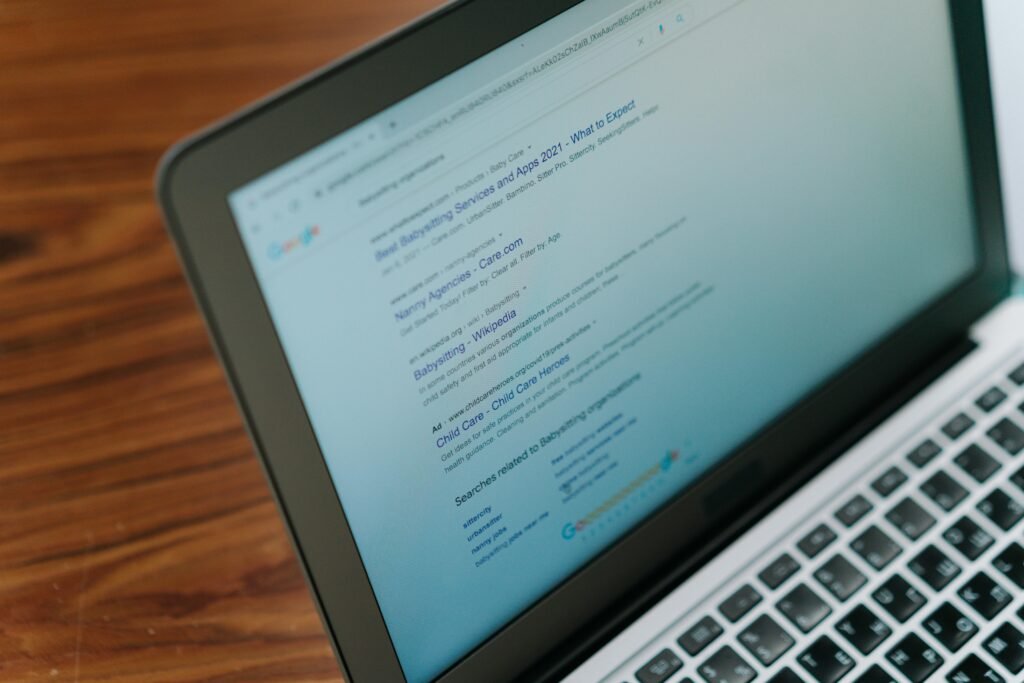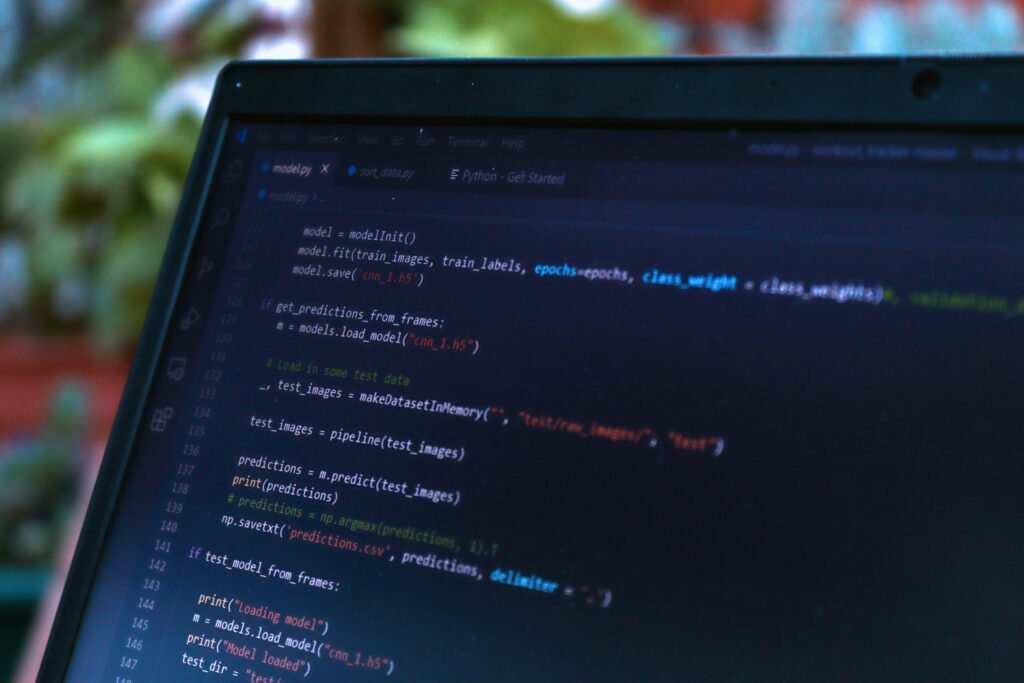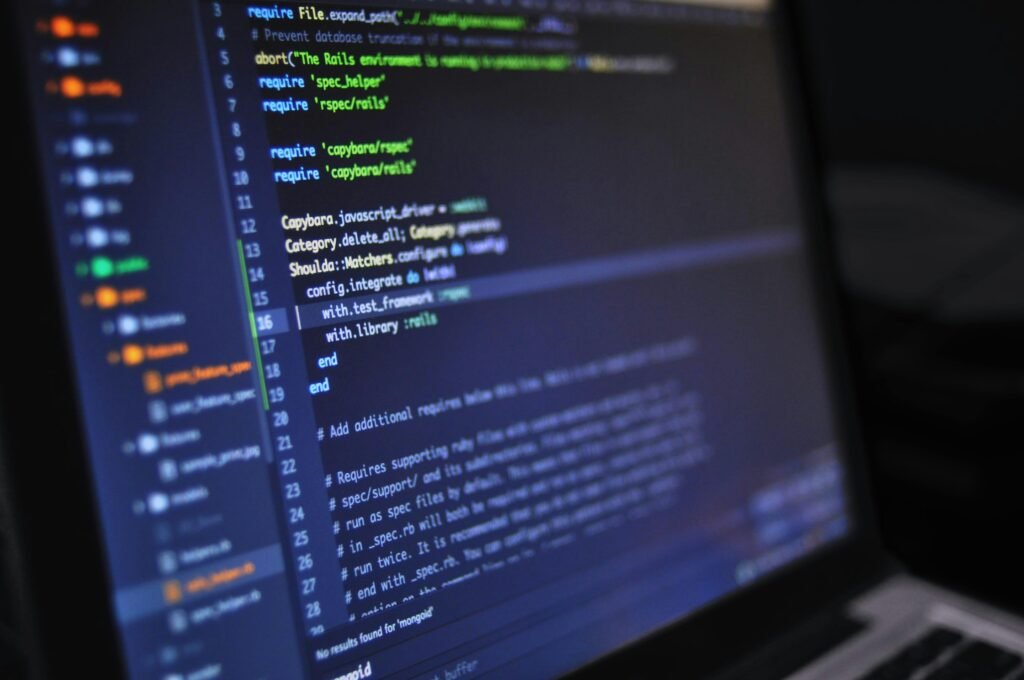The way we see content online has changed. It’s no longer just what we follow — it’s what the algorithm thinks we’ll love. That’s what “For You” feeds are all about. Whether it’s TikTok, Instagram, YouTube, or any other app, these feeds are smart. They learn what we like, and they keep us watching, scrolling, and engaging for hours.
1. Users spend an average of 2.5x more time on algorithmic feeds than on chronological ones
When social media platforms shifted from chronological timelines to algorithmic feeds, many users didn’t love it at first. But something interesting happened. People started spending more time in the apps. In fact, users now spend about two and a half times more time on algorithmic feeds compared to old-school, time-based ones.
Why? Because algorithmic feeds learn. They study your likes, what you pause on, what you watch fully, and even what you skip. Over time, they show you exactly the kind of content you enjoy. That means no boring posts, no random updates. Just pure interest-based scrolling.
For creators and brands, this is huge. If your content matches what people like, the algorithm will push it further. That gives you more reach and more engagement, without spending more on ads. For parents, it means kids can get deeply pulled into content loops — both good and bad. Understanding this stat helps you guide your child’s screen time more wisely.
Actionable advice? If you’re a content creator, stop posting randomly. Study what your audience loves. Use keywords in captions. Post videos or images that spark curiosity. Focus on content that gets watched all the way through. That signals the algorithm that your post is worth pushing.
And if you’re a parent or teacher, it’s worth introducing kids to positive algorithmic environments — like Debsie. Instead of random videos, our feed shows learning content based on what kids enjoy most. They get smarter the more they watch — and they stay engaged without wasting time.
So yes, people spend 2.5x more time on algorithmic feeds. But with the right kind of content, that time can be meaningful and productive — not just endless scrolling.
2. The “For You” feed on TikTok accounts for over 75% of total app usage time
This stat tells us something very clear: TikTok’s power is in its “For You” page. That’s where most of the magic happens. Over 75% of all time spent on TikTok is people watching videos the app chose for them — not from people they follow.
This feed is highly personal. It changes with every scroll. One video you watch for five seconds might influence the next ten videos you see. And because of this personalization, users feel like the feed understands them better than their friends do.
If you’re creating content, this means you don’t need a huge following to go viral. TikTok doesn’t care how many followers you have. If your video is good, the algorithm will show it to thousands — sometimes millions. All you need is a video that connects with people.
From an educational angle, this also matters a lot. Imagine if 75% of a child’s screen time is spent watching videos TikTok chooses. If those videos are fun but pointless, that’s a lost opportunity. But if that time is spent watching content that teaches, inspires, and makes them curious — like the videos we use on Debsie — then every minute is well spent.
Want to get into that 75% of attention? Make videos that grab attention in the first three seconds. Use trending audio wisely. Keep your message clear and visual. And remember — the algorithm feeds on watch time. If people stay and watch, the app keeps showing your content to others.
This stat isn’t just about TikTok. It’s about the future of content. Personalization is no longer optional — it’s the engine of engagement.
3. Instagram’s algorithmic feed increased user session time by 30% after its launch
When Instagram moved from a chronological feed to an algorithm-based one, users complained. They missed seeing posts in order. But behind the scenes, Instagram saw something surprising — user session time jumped by 30%.
That means people started spending a lot more time on the app. And why wouldn’t they? Now, instead of seeing random posts from hours ago, they were getting a highlight reel — the most interesting posts, based on what they liked, saved, and commented on.
This is a big lesson for anyone trying to build an audience online. People don’t just want more content — they want better content. If your posts show up in someone’s feed, it’s because Instagram thinks it matters to them. That’s your chance to make a connection.
Here’s a tip: don’t chase the algorithm. Serve the user. Make posts that are useful, funny, emotional, or beautiful. Use simple captions that tell a quick story. Use carousels — they keep people swiping. The more people engage, the longer they stay, and the more your post gets shown.
Now think of this from a child’s point of view. If their Instagram feed keeps them on the app 30% longer, is that good or bad? It depends on the content. This is why we built Debsie’s learning feed carefully. It’s algorithm-powered, but it’s designed to boost smart thinking, focus, and creativity — not just attention.
That 30% increase in time isn’t just about tech — it’s about how powerful good content can be when it’s matched with smart delivery.
4. Personalized feeds boost engagement rates by 40% compared to non-personalized ones
Let’s say you’re at a party and someone walks up to you and starts talking about your favorite movie, your favorite snack, and even your pet’s name. You’d be hooked, right? That’s what personalized feeds do. They make content feel like it was made just for you.
And the data proves it. Engagement rates — likes, shares, comments, saves — are 40% higher on personalized feeds compared to random or chronological ones. People respond more when the content speaks directly to them.
This matters a lot for educators, parents, and anyone trying to teach or inspire. If you want a child to learn, the content must feel relevant. That’s why at Debsie, the learning path is unique for every child. The more they interact, the better the system understands their learning style and adjusts to them.
From a creator’s point of view, you can use this stat to your advantage. Look at your analytics. What kind of content do people save? What do they share? That’s your guide. Don’t just post what you like — post what your audience reacts to.
Personalized content doesn’t mean you change your message. It means you tell your story in a way that fits your viewer’s world. If you do that well, the algorithm rewards you — and your audience keeps coming back for more.
5. 91% of users say they are more likely to keep scrolling when content feels tailored
Almost everyone agrees: when the feed feels like it “gets them,” they can’t stop scrolling. That’s what 91% of users say. They keep going, one post after another, because it feels like each new video or image was made just for them.
This is the real power of personalized content. It removes the friction of decision-making. You don’t need to search or think — just scroll. And because the content is based on your behavior, your time on the app keeps increasing.
If you’re a creator, this stat is gold. It means you must focus on making content that connects with very specific people — not everyone. Pick a niche. Talk to one type of person. Make your content feel personal. The more specific your content feels, the more likely it is to make someone feel, “Wow, this was made for me.”
For example, a math teacher sharing one-minute algebra tips isn’t talking to everyone. They’re speaking to students struggling with equations. That kind of focus makes the algorithm show the content to more of the right people.
And for learning platforms like Debsie, this stat confirms why we do what we do. Our learning journeys are not one-size-fits-all. If a child is interested in space, they’ll see more astronomy content. If another loves building games, the system shows them more coding projects. That’s how we make learning feel exciting — and personal.
The next time you see your child endlessly scrolling, know this: it’s not the app. It’s the personalization. The solution isn’t to block the app — it’s to redirect their time to platforms that personalize for learning and growth.
6. Twitter saw a 20% increase in daily active users after pushing “Home” (algorithmic) timelines
When Twitter began promoting its “Home” timeline — the one with algorithm-selected tweets — something big happened. Daily active users grew by 20%. That means more people used Twitter every day because the content felt more engaging.
It used to be that tweets appeared in the order they were posted. But that meant you could miss interesting stuff just because you weren’t online at the right time. With the algorithmic timeline, Twitter started showing tweets based on what it thought you’d care about most. And it worked.
If you’re trying to grow your audience or brand, you need to understand what this means. The platforms want people to stay longer. So they reward content that keeps people engaged. Your job is to make content that fits into that goal. Post at times when your audience is active. Ask questions that get replies. Join trending conversations. And always be consistent.
For parents, this also highlights how small changes in a feed can change a child’s habits. A 20% boost in daily usage might not seem like a lot — until it turns into hours over weeks. This is why digital balance matters. With Debsie, our content is still algorithm-powered, but it’s designed to grow the child — not just capture their attention.
This stat isn’t just about Twitter. It’s about how personalization changes behavior. Every platform is leaning into it. As users, we should understand it. As educators, we should guide it.
7. 80% of time spent on YouTube comes from algorithm-recommended content
Think about this: when you’re on YouTube, most of what you watch isn’t what you searched for. It’s what YouTube shows you. Over 80% of all the time people spend on YouTube is from algorithm suggestions — not direct searches.
That little “Up Next” sidebar or home screen is doing more work than we realize. It’s constantly guessing what we’ll like next — and most of the time, it gets it right. That’s why people keep watching, one video after another.
If you’re a YouTuber, this is where your focus should be. Thumbnails, titles, and first 10 seconds matter more than ever. They help your video get picked by the algorithm. But beyond that, your video must keep people watching. The longer the watch time, the more the algorithm favors your content.
And this is why educational content has such big potential. People go to YouTube to learn. But unless the learning videos are engaging, they get buried. That’s why on Debsie, we don’t just record lectures. We create fun, interactive lessons that make kids want to keep watching. It’s the same idea — but with a smarter purpose.
If you’re a parent and your child spends a lot of time on YouTube, you might want to guide them to channels and platforms where the algorithm serves them quality content. Otherwise, they could be pulled into endless streams of distraction.
Remember: 80% of YouTube time is algorithm-driven. That means the content we feed the system really matters.
8. Facebook’s News Feed algorithm drives over 60% of all user interactions on the platform
Facebook may be older than TikTok or Instagram, but it still has one of the most powerful algorithms. The News Feed — the main page where users scroll — drives over 60% of all likes, comments, and shares.
That means the majority of actions people take on Facebook happen because of what the algorithm decides to show them. Not what their friends post. Not what pages they follow. But what Facebook thinks they’ll enjoy or respond to.
This stat is useful if you’re trying to grow your business or cause on Facebook. Your content needs to trigger interaction. Ask questions. Post images or videos that stop the scroll. Use storytelling. Respond to comments. All of this tells the algorithm that your content is worth pushing to more people.
For families, this stat shows how powerful these feeds have become. A child or teen might be engaging not because they love a post — but because the algorithm keeps showing more of the same type of content. This feedback loop can be positive or negative, depending on what the starting point is.
That’s why on Debsie, we focus on content loops that build curiosity. If a child watches a science video, we offer the next one based on that topic. If they try a coding puzzle, we give them a slightly harder one next. It’s the same engagement model — but focused on growth.
Algorithms like Facebook’s are not just tools — they’re drivers of behavior. If we understand that, we can use them for good.
9. Average TikTok session length is 10.85 minutes, driven primarily by the “For You” feed
Imagine opening an app for a quick look — and then staying for almost 11 minutes every time. That’s what happens with TikTok. The average session lasts 10.85 minutes. That may not seem like a lot, but when you multiply it by the number of times users open the app daily (which is a lot), it adds up fast.
Why does this happen? It’s the “For You” feed. It knows what you like before you do. As soon as you open the app, you’re shown videos that match your past behavior. If you like dog videos, you’ll see more. If you pause on dance challenges, expect more dancing. It’s personalized entertainment at lightning speed.
For creators, this means you don’t just need to post — you need to hold attention. Your first three seconds are everything. Start with movement, sound, or a big idea. You want the viewer to stay, not swipe away. Every extra second someone watches your video helps it reach more people.
Now let’s talk about kids. If a child spends nearly 11 minutes every time they open TikTok, and they open it 17 times a day (more on that later), that’s over 3 hours a day. That’s a lot of time — and it’s mostly passive.
This is where intentional platforms like Debsie make a difference. We build our content to grab attention in the same way — but we fill that time with rich learning. Kids might spend 10 minutes watching something, but in that time they’ll learn a science fact, solve a puzzle, or try a creative challenge. Same engagement, better outcome.
This stat tells us something powerful: time spent isn’t random. It’s designed. The platforms are built to keep users inside — and they’re very good at it. As creators, we can learn from this and apply it to our own content. As parents and educators, we need to guide young people toward platforms that make that time count.
The next time someone says kids “just scroll too much,” remind them that it’s not just scrolling. It’s the feed. And with the right feed, that time could be learning time too.
10. Users are 3x more likely to share content seen via algorithmic discovery
Sharing is the ultimate compliment. When someone shares your content, they’re saying, “This is worth showing someone else.” And according to this stat, users are three times more likely to share something they discovered through an algorithm — not something they searched for or found by accident.
That’s a big deal.
It means that content delivered through a “For You” feed doesn’t just get watched — it spreads. The personalization makes the content feel more relevant. So when a user sees something that clicks with them, they’re more likely to pass it on to friends, family, or followers.
For content creators, this is where viral growth starts. Your video, post, or story doesn’t need to reach everyone. It just needs to resonate deeply with a few people. If it does, the algorithm boosts it, and people share it. Then the process repeats.
So how can you make your content more shareable?
Keep it emotional. Make people laugh, cry, or think. Content that sparks a strong feeling is more likely to be shared.
Keep it useful. A helpful tip or hack often gets shared because people want others to benefit too.
Keep it surprising. If your content has a twist or an insight people didn’t expect, they’ll want to share it.
And don’t forget — make sharing easy. Include captions or hooks that encourage people to tag others.
For educators and parents, this stat helps explain how ideas spread online — for better or worse. A child might see a funny video in their “For You” feed and share it without thinking. But the same power can be used for learning. At Debsie, we design our lessons to be fun and shareable. That way, when kids share what they’re learning, their friends get excited too.

This isn’t just about going viral. It’s about building connection. When a child shares a science fact or a math puzzle they discovered, they’re not just sharing knowledge — they’re sharing excitement.
Three times more likely to share isn’t just a number. It’s a signal that “For You” feeds create strong emotional hooks. Let’s use those hooks for something great.
11. Netflix reports that 80% of watched content comes from algorithmic suggestions
Netflix is a giant in the world of content. And according to their data, 80% of what people watch comes not from searches — but from what Netflix recommends. That means the homepage, the top picks, the “Because You Watched” row — all powered by algorithms — are doing most of the heavy lifting.
People don’t want to scroll forever. They want options they’ll enjoy. And when the platform gets it right, people click play without thinking. That’s the power of a good algorithm: it makes choice easy.
This should be a wake-up call for creators. If you’re building content and want people to find it, you have to think about recommendation engines. Whether you’re making videos, writing blogs, or building an online course, your title, description, and even thumbnail image must signal value to both people and algorithms.
From a user’s point of view, this stat shows how much trust we put in algorithms. We believe Netflix knows what we’ll like. And most of the time, it does.
This is why at Debsie, we’ve built similar learning suggestions into our platform. If a child watches a lesson on the solar system, we’ll recommend a space experiment next. If they explore a logic puzzle, we might follow up with a coding challenge. The idea is to keep the curiosity chain going, just like Netflix does with shows.
For parents, this stat matters because it tells you something about how kids choose content. They don’t search. They click what’s in front of them. If the algorithm shows them fun, positive content, they learn and grow. If not, it can be a lot of wasted time.
So how can you apply this idea?
If you’re an educator, think about how to line up learning in smart sequences. Don’t just offer a random set of lessons. Create a learning journey where each step leads to the next.
If you’re a parent, help your child find platforms that guide them with quality suggestions. That’s how you turn screen time into discovery time.
Netflix knows this works — and so should we.
12. 70% of Instagram Reels views come from the “Suggested” tab, powered by the feed algorithm
Reels have become a major part of Instagram — and here’s the most interesting part: 70% of views on Reels don’t come from followers. They come from the Suggested tab. That means most of the views happen because the algorithm picked that video and showed it to someone new.
This stat is massive if you’re a content creator. It means you don’t need thousands of followers to get views. You just need to make a Reel that the algorithm likes — one that keeps people watching.
So what makes a Reel algorithm-friendly?
It has to be visually catchy. Motion in the first second. Bright lighting. Clear visuals. Instagram wants content that stops the scroll.
It has to be short and tight. The sweet spot is often 7–15 seconds, but it has to feel complete. If people rewatch it, even better. That signals high engagement.
It needs some kind of spark — emotion, humor, surprise, or wow-factor. That’s what makes people watch to the end, and maybe even share.
And finally, it needs a clean caption or hook. Something like “Wait for it…” or “This surprised me…” gets people curious enough to watch.
Now let’s flip to the viewer’s side. Kids and teens watching Reels are mostly not seeing content from friends — they’re seeing whatever the algorithm thinks they’ll like. That’s not always a bad thing, but it means their experience is being shaped by something invisible.
At Debsie, we saw this behavior early on. That’s why our self-guided content works like Reels — quick, visual, and tailored. But instead of dances or pranks, we’re feeding kids exciting facts, logic puzzles, and science tricks. It’s fun and good for the brain.
For parents, this stat is important. If your child spends a lot of time on Instagram, it’s likely they’re not just catching up with friends — they’re deep in algorithmic discovery. That’s not always bad. But it means you should know what kinds of content they’re being “suggested.”
As creators or educators, we now know where to focus: Reels. Short, smart, and suggestion-ready. If it’s shareable and rewatchable, it’s unstoppable.
13. Personalized “For You” feeds reduce app churn rate by 25%
App churn rate is a fancy term for how many users quit or stop using an app over time. A high churn rate is bad — it means people aren’t coming back. But platforms with strong “For You” feeds see a 25% lower churn rate. That means people stick around longer, and they keep coming back.
Why? Because the feed feels personal. When you open an app and the first thing you see is something that makes you smile, laugh, or think — you’re more likely to return. That’s what personalized content does. It builds a little connection between the user and the platform.
For creators and startups, this is a key lesson. If you’re building an app, a learning tool, or even just a content series — make it personal. Don’t treat every user the same. Use their past behavior to guide what you show them next. That kind of smart design makes people stay.
At Debsie, we use this principle in our gamified learning system. If a student finishes a logic lesson, we suggest a hands-on game that uses that logic. If a child spends time on space topics, we show them Mars missions, telescope facts, or astronaut challenges. That’s how we keep curiosity alive — and reduce churn.
For parents, this stat tells you why kids get hooked on certain platforms. It’s not just the videos. It’s the fact that the app remembers what they like — and serves more of it. Instead of fighting that, you can use it. Point your child toward platforms with smart personalization and educational goals.
If you’re designing content for kids, remember that one-size-fits-all is out. Curated, adaptive, personalized journeys are in. They’re stickier, more rewarding, and way more engaging.
This stat isn’t just about business. It’s about designing content that feels like a friend. When something feels made for us, we stay. Simple as that.
14. Engagement rate on personalized content is 6.2%, compared to 2.1% for non-personalized
Engagement rate is the heartbeat of content. It tells you how many people are actually interacting — liking, commenting, saving, or sharing. And when content is personalized, engagement triples. That’s right — 6.2% versus just 2.1% when it’s not.
This gap is too big to ignore.
If you’re creating content and not thinking about personalization, you’re missing out on a huge audience. Even simple tweaks can make a big difference. Change your captions to speak directly to a type of person. Use language that shows you “get” your audience. Show that you understand their pain, their goals, or their interests.
It’s not about tricking the algorithm. It’s about genuinely connecting with your viewer.
At Debsie, we don’t just push random lessons to kids. Our platform learns. If a child struggles with a certain math concept, the system finds new ways to explain it. If they speed through a coding challenge, we level it up. This boosts engagement — because the content always meets the learner where they are.
If you’re a parent, think about this when choosing learning tools. The best ones adapt. They change based on your child’s pace, their interest, and their learning style. That’s what makes kids want to keep going. That’s how learning becomes joyful.
This stat also reminds creators and educators that people aren’t all the same. Personalization is no longer a bonus — it’s the baseline. If your content isn’t relevant, it won’t engage. If it is relevant, the engagement takes off.
So how do you get to that 6.2% level?
Ask yourself: who is this for? Why would they care? What would make them stop and respond?
If you can answer those three questions with every piece of content, you’re already ahead.
15. TikTok users open the app 17 times per day on average, mostly for the “For You” feed
Seventeen times a day. That’s how often the average TikTok user opens the app. And each time, it’s for one main reason — to check the “For You” feed. That’s where the action is. That’s where users get their bite-sized hits of entertainment, information, or inspiration.
This behavior shows how strong the habit loop is. Open the app, get a hit of something interesting, swipe, repeat. It’s fast, smooth, and always different. That’s what makes it addicting — and effective.
For content creators, this means you get multiple chances every day to reach your audience. Seventeen opportunities, to be exact. But your content has to be good enough to stand out in the scroll.
Focus on strong openings. Clear ideas. Sharp visuals. Think like a headline writer — but for video.
For educators and parents, this is a big moment of reflection. If a child is checking TikTok 17 times a day, how can that habit be shaped into something positive? How do we guide their curiosity into things that teach and build their minds?

At Debsie, we used this exact insight when designing our self-learning system. Our lessons are quick and exciting. They’re built to feel like the “For You” feed — but they feed the brain instead. Every time a child logs in, they’re shown something fun, challenging, or surprising.
The goal is simple: turn the habit of checking into a habit of learning.
This stat also highlights the importance of balance. Seventeen sessions of mindless content can drain focus. But seventeen short bursts of learning? That’s powerful. That builds confidence. That creates momentum.
Whether you’re creating, teaching, or parenting — remember: the “For You” feed is more than just content. It’s a trigger for behavior. Let’s make that behavior something worth repeating.
16. 67% of Gen Z users prefer algorithmic feeds over manual searches
Let’s be honest — searching takes effort. You need to know what you want, type it in, and pick from a list. But what if content could just find you?
That’s exactly what algorithmic feeds do. And that’s why 67% of Gen Z — the most tech-savvy generation — prefer feeds over search bars. They’d rather scroll and discover than dig and type.
This shows us something important: younger users expect personalization. They don’t want to look for content. They want the platform to deliver it to them. And they reward platforms that do it well by staying longer and coming back more often.
If you’re a content creator, this is your cue to stop focusing only on search-based content. SEO still matters, yes — but “suggestion optimization” matters even more. That means creating content that’s clickable, watchable, and shareable. Your goal isn’t just to be found — it’s to be featured.
If you’re an educator building for this generation, your tools need to feel intuitive. Kids won’t spend time browsing menus. They want to open an app and get something cool, useful, and just for them. That’s why Debsie’s learning journeys are built to flow naturally, not manually.
For parents, this stat helps explain why your child might struggle with structured learning apps that require too much clicking around. Gen Z grew up with feeds — not folders. If they don’t feel like the content is finding them, they might tune out.
The lesson here? Don’t fight the feed — design for it. Whether you’re building a course, writing a blog, or making a video, make it feel like a discovery, not a search result.
17. Over 40% of time spent on Spotify is driven by algorithm-generated playlists
Spotify is all about choice. You can pick any song, any time. But here’s the twist: 40% of the time, users don’t choose at all. They just listen to what Spotify recommends. That means personalized playlists, like Discover Weekly or Daily Mixes, are guiding nearly half of all listening time.
This tells us that even in a platform built around control, users still love being guided. It saves time, reduces decision fatigue, and often surprises them with music they love but didn’t know about.
If you’re a creator of content — not just music — think about how this idea applies to your space. What’s your version of a “playlist”? Can you group your videos, blogs, or lessons in a way that makes discovery feel automatic?
That’s exactly how we do it at Debsie. Our learning feed works like a playlist for the brain. Kids don’t just choose a subject — they get a curated stream of lessons and challenges that adapt based on what they’ve already done. That makes learning seamless and fun.
And for parents, this stat proves something big: even when kids can choose, they often don’t. They follow what feels personalized. So instead of worrying about screen time, think about feed quality. Is the feed filled with music, memes, or mind-stretching content?
The Spotify model shows us that curation beats control — and that smart algorithms can build deeper engagement, not just longer sessions.
18. On average, users view 5x more content in algorithmic feeds than in manual feeds
Here’s the thing about algorithmic feeds — they’re fast. Really fast. And because the content just keeps coming, users end up seeing five times more content than they would if they had to choose it themselves.
That’s not just a fun fact — that’s a game changer.
Imagine showing your content to five times more people, just because the algorithm picked it up. That’s what happens when you play by the platform’s rules.
So, what does the algorithm want? It wants watch time. It wants attention. It wants signals that say “this post is good.”
That means you, the creator, need to hook attention quickly. Keep your messages tight. Use subtitles if it’s a video. Keep audio clean. Make your visuals bright and readable. Every second counts.
Now let’s think about this from an educational lens. If kids are seeing five times more content in algorithmic feeds, we need to make sure that some of that content is smart, positive, and meaningful. At Debsie, we designed our feed so that even if a child browses for 10 minutes, they’ll touch on multiple topics — each building on the last.
As a parent, knowing this stat means you can guide your child’s time better. Instead of limiting time only, start by upgrading the quality of the feed. When the feed is good, more time actually means more learning.
Five times more content means five times more opportunity — if we use it right.
19. YouTube’s “Up Next” algorithm influences over 70% of watch time
On YouTube, what you watch next often matters more than what you searched for first. That’s because over 70% of all watch time is driven by the “Up Next” algorithm — the recommendations shown on the side or after a video ends.

This is where most creators win or lose. If your video doesn’t get picked up by the “Up Next” engine, it might get buried. But if it does — boom. Your views can explode overnight.
How does YouTube decide what’s “Up Next”? Watch time, engagement, topic similarity, and viewer behavior. It’s not just about views — it’s about how long people stick around and how much they interact.
So, if you want to win here, think about your video as part of a chain. Does it connect to other popular topics? Does your title make it feel like a follow-up or a twist on something trending? Does your thumbnail match the visual style of other successful videos?
For educators, this stat shows that learning content on YouTube has a shot — but only if it’s engaging enough to make it into that “Up Next” loop. At Debsie, we’ve taken that idea and built it into our own system. Instead of waiting for a kid to choose what to watch, we guide them to the next best thing — automatically.
And for parents? If 70% of a child’s watch time is driven by algorithm suggestions, then what’s being suggested matters more than what they search for. That’s why parental controls alone aren’t enough — the algorithm must be aligned with your values.
This is not about fighting the algorithm. It’s about feeding it the right signals.
20. Pinterest’s algorithmic feed increases time spent by 48% per session
Pinterest is often seen as calm compared to other social platforms. But don’t be fooled — its algorithm is just as powerful. In fact, when Pinterest rolled out its algorithmic feed, session time jumped by 48%. That means users started spending nearly half again as long on the app with each visit.
Why? Because Pinterest stopped showing users random pins. Instead, it started showing things they actually cared about — DIY crafts, dream kitchens, fashion inspo, educational resources. The result? People stayed longer, explored deeper, and saved more.
For creators, this is a golden opportunity. Pinterest isn’t just a search engine — it’s a discovery engine. If you post helpful, beautiful, or smart content, the algorithm can place your pins in front of users who’ve never heard of you. Focus on visuals that pop, clear descriptions, and keywords that match how people think.
For educators and digital product designers, this stat offers inspiration. If people will stay longer for good content, then we need to build tools that match curiosity with usefulness. At Debsie, we apply the same idea — serving kids with learning content they love, in a format that makes them want to stay.
For parents, this is another reminder: feed design influences behavior. If a platform can extend session time by nearly 50%, imagine what kind of impact a strong learning platform can have when it’s designed to keep kids interested — in the right things.
It’s not about keeping kids online for longer — it’s about making the time they’re already online more valuable.
21. 83% of TikTok users say the “For You” feed feels “highly relevant” to their interests
Relevance is everything. And on TikTok, a huge 83% of users say the “For You” feed feels like it really knows them. That’s not just impressive — it’s personal.
This stat explains why TikTok is so sticky. The content doesn’t feel random or generic. It feels made for you. And when people feel understood, they stay longer, engage more, and keep coming back.
So how can creators tap into this feeling?
Know your audience deeply. Use their language. Talk about their struggles, joys, and interests. Don’t try to go viral — try to go personal. The algorithm picks up on the signals of real relevance. If people are rewatching your video, commenting things like “this is so me,” or sharing it with friends — that’s gold.
At Debsie, we build that same feeling into our educational experience. When a child opens their learning dashboard, it’s not just a list of lessons. It’s a stream of exciting challenges, videos, and games that match their current interests and learning style.

For parents, this stat is your reminder that kids want to feel seen. If the only place they get that is on TikTok, they’ll go there. But if you give them an alternative that also feels personalized, like Debsie, they’ll thrive.
Relevance isn’t about tricks. It’s about connection. That’s what every “For You” feed aims to build — and it’s something we should all aim for, too.
22. Meta reports that AI-powered feeds boost retention by 20% year-over-year
Retention means people keep coming back. And Meta — the parent company of Facebook and Instagram — found that AI-powered feeds increased user retention by 20% over a single year.
That’s not just a short-term bump. That’s loyalty.
The AI behind these feeds learns what people like and keeps evolving. It figures out when you’re most active, what type of posts make you linger, and even how your interests change over time. It adjusts to keep you hooked.
For creators, that means consistency matters. If you post regularly, and your content gets positive engagement, the AI starts to see you as “reliable.” That means more visibility, more reach, and more growth — long term.
For educators and edtech builders, this stat says: if you want kids to stay with your learning product, it better be adaptive. At Debsie, we track how each child learns best. If they rush through video lessons, we balance it with more interaction. If they love solving puzzles, we introduce logic-building challenges. This keeps them excited to come back every day.
Parents, take note: retention is what turns habits into learning routines. And if your child already has strong digital habits, the goal isn’t to break them — it’s to redirect them into spaces that also build focus, resilience, and creativity.
Retention is built by relevance, consistency, and experience. That’s what the smartest AI feeds know — and what the best educational platforms aim to deliver.
23. On TikTok, 92% of views come from videos shown in the “For You” feed, not follower feeds
When TikTok says “For You,” it means For You. A staggering 92% of all views are from content people don’t follow already. That means content from users’ follower list plays a very small part in the total views. The algorithmic discovery is doing almost all the heavy lifting.
This tells creators something huge: building a massive follower base is helpful, but it doesn’t matter nearly as much as making content that the algorithm will recommend. If your video gets placed in others’ “For You” feeds, even people who have never heard of you can see, like, share, and follow.
If you want your videos to get into that 92%, your content must be tuned for what TikTok’s algorithm values. First seconds matter. TikTok watches whether people skip or watch through. So start with something that grabs attention immediately—bright visuals, action, a question, or something surprising.
Keep the pacing tight. Don’t drag the start. Also, retention is critical: if people watch until the end or rewatch, the algorithm treats the content as “good” and pushes it more.
Don’t ignore trends. TikTok’s trends are like wind currents: if you ride them right, your content can travel far. But always add your own twist. Something that reflects your voice, your style, or uniqueness otherwise it just becomes noise.
For educators and learning creators, this stat means your lessons must not only teach — they must entertain a little. A science demo that starts dull? It’ll get skipped. But one that begins with a quick visual or surprising fact will pull people in.
At Debsie, we try to hook learners from the first second—maybe by an interesting question, a colorful visual, or a short puzzle before diving deep.
For parents, this stat is a reminder: what shows up in your child’s feed is almost entirely algorithmic. So monitor what they’re being served, and help them follow creators or platforms that provide value — not just what passes time.
Encourage them to like, save, share content that you feel good about — those actions signal the algorithm to give more of the same.
24. Recommender systems increase user satisfaction scores by 35%
When platforms use recommender systems — that is, algorithms that suggest content based on what users like and do — user satisfaction tends to go up by about 35%. That’s big. It means people feel happier using the app when what they see feels relevant and interesting, not random or repetitive.
Higher satisfaction leads to more trust. When users believe the platform “understands” them, they’re more likely to come back. They spend more time. They explore more. They even forgive a few bad suggestions because they expect the overall experience will be good.
For creators or platform builders, making your content or platform part of that satisfaction loop is crucial. Think about how your material can align with what users already enjoy, but also gently stretch them into new, related areas.
If someone likes cartoons, maybe a video that teaches drawing styles. If someone is into puzzles, maybe logic challenges. That kind of gentle expansion keeps satisfaction high because it feels safe but still fresh.
From a design side, features like “Did you like this?” or “See more like this” buttons help. They give the user some control, which builds satisfaction. And that feedback helps the algorithm do better work.
For educational platforms like Debsie, this means keeping learners engaged not just with content but with feedback mechanisms. After a lesson, asking what they liked, what felt hard, what they want next helps tailor their journey and increases satisfaction.
For parents, satisfaction matters because if your child is satisfied, they’re more likely to keep learning rather than seeing the app as a distraction. Choosing platforms or content that feel good to they use matters.
25. Snapchat’s Discover (algorithmic feed) sees 3x more swipe-ups than user-generated stories
Snapchat’s Discover section — curated, algorithm-driven content — gets three times more swipe-ups than regular stories posted by users. That means people are much more willing to engage with content the platform chooses over content from their friends when exploring or browsing.
This shows that people sometimes prefer curated content over what they already know. It’s not always about seeing what friends are doing. Discovery, novelty, and what feels fresh often win.
If you make content, this suggests that platforms’ curated or suggested spaces are high-impact places to aim for. You might get fewer views initially from posts shared just with followers, but being discovered in a curated feed can bring far more engagement.
For educational content, this is powerful. It means that lessons, games, experiments or stories that are well-designed for Discover-style placement can attract attention beyond your usual audience. A science experiment story in Snapchat’s Discover could reach students who normally don’t engage with science content.
At Debsie, we recognize that learners also benefit when they discover content they didn’t expect — interesting facts, surprising puzzles — because those moments often stick in memory better. So we try to build content that surprises in a positive way, and then let algorithmic suggestion carry it forward.
Parents should watch this too. If many platforms use curated feeds that outperform “friend content” in engagement, then what kids discover independently becomes very influential. Respect what they find, guide it, and introduce them to high-quality curated content where possible.
26. 88% of digital ad impressions are served within algorithmic environments
Almost all digital advertising now happens inside algorithmic feeds. 88% of the time, ads are served on feeds that use algorithms to decide what content to show and when. That means brands, creators, and platforms all have to understand these spaces, because that’s where visibility is being bought.

For advertisers, this changes how you design your ads. You can’t just assume someone saw your content because they follow you. Your creative has to be ready for discovery. The visuals must arrest attention quickly. Text must be readable fast. Messaging must make sense even without sound, because many algorithmic feeds auto-play content silently.
For educators or creators producing ad-supported or promotional content, think about how you can use sponsored content to also provide value. An educational tip, a learning tool, or something that expands curiosity can make an ad feel less like an interruption.
From a platform design standpoint, algorithmic environments give you high reach, but also high competition. If everyone is trying to grab attention in those feeds, you have to do better. Strong visuals, strong hooks, and meaningful content help you cut through.
Parents should be aware that even “ads” in algorithmic feeds are designed to be engaging — sometimes dangerously so. Teaching kids to recognize advertising, to ask “why is this being shown to me?”, helps build media literacy.
27. Users spend an average of 4.2 seconds more per post on personalized feeds
On personalized feeds, people linger longer. On average, they spend around 4.2 seconds more per post than on generic or non-personalized feeds. That might sound small, but multiplied across many posts and many users, that adds up to a lot of attention.
That extra time per post is precious. It means more opportunity for your content to register. More time for the message to hit home. More chance for sharing, saving, or commenting.
As a creator, you want to use that extra time wisely. Make your visuals clear so people notice details. Use subtitles or overlays when needed. Avoid clutter. Tell stories or use hooks that encourage people to pause and read, think, or feel something. Don’t assume people will watch passively.
For learning content, that extra attention is a chance to deepen understanding. A math problem shown clearly, a science fact explained with a good visual, or a puzzle that needs attention can work well here. Debsie lessons try to use that window to build curiosity, not just speed.
Parents: this stat suggests that when content is well-designed, it can slow the pace of scrolling. Which is good. It gives brain time to process rather than just skim. Encourage kids to follow creators who design content that needs attention rather than fast flicks.
28. Spotify’s Discover Weekly has a 60%+ repeat listen rate every week
Spotify’s Discover Weekly is one of the most successful algorithmic features. More than 60% of people listen to it every single week. That means most users don’t skip it. They open it, explore, and enjoy the recommendations.
That tells us that when algorithmic content gets tuned well, people come back for it regularly. It becomes part of their habit.
If you create recurring content — weekly, biweekly — consistency matters. People like knowing something good will be there. So build themes, series, or regular features that people can look forward to.
Educational creators can use this stat to shape schedules. For example, a weekly challenge, quiz, or recap can build anticipation. Debsie makes sure there are recurring learning touchpoints so students know to expect something fun and worthwhile each week.
Parents, this stat shows how algorithmic feeds can help build positive habits. If your child expects a good learning challenge weekly, it can become a mental marker — something they look forward to, not something they dread.
29. Reddit users browsing the “Best” algorithmic feed spend 50% more time than on “New.”
Reddit lets users sort content many ways. “New” shows the latest posts; “Best” shows ones the algorithm thinks are top quality. On the “Best” feed, users spend half again more time — 50% more — than on “New.”
Why? Because the algorithm selects content people like. It filters out low-quality or irrelevant posts. It shows posts with discussions, engagement, and signals that they’ll be interesting. Users trust it.
If you share on forums, blogs, or communities, try to craft content that works in algorithmic priority systems. That means good titles, relevant content, engagement through comments, and value that encourages discussion.
For educators, this means creating posts and lessons that invite feedback, responses, and reflection. A lesson that asks “what do you think?” or “how would you solve this?” encourages interaction. That gives algorithmic feeds signals to surface it more.
Parents can learn from this: encourage thoughtful posts, reflections, and discussions in whatever online spaces kids use. Posts with depth often get surfaced more — which is good if you want positive influence.
30. 95% of users on short-form video platforms engage primarily through algorithmic feeds
Almost all users on short-video platforms — TikTok, Reels, Shorts — use algorithmic discovery as their main mode of engagement. 95% of their interactions are via feeds selected by algorithm rather than from people they follow.
This tells us that for short-form content, the game is almost entirely about discovery. Followers help, but what really counts is whether your content can be found beyond your current audience.
As a creator, optimizing for algorithmic feeds is essential. Keep videos short, punchy, and emotionally resonant. Use captions, trending sounds, clear visuals. Try to get replays or loops. If someone watches more than once, that signals very strong interest.
For learning content, this means designing micro-lessons, quick experiments, or fun facts that can be delivered in 15–60 seconds. That matches people’s attention spans and the expectations of algorithmic feeds.

Parents, this stat means that what your child sees is mostly chosen by algorithms. Their learning and curiosity will grow when their feed is full of quality short-form content. It’s okay they watch 30-second science clips if those clips teach something.
Conclusion
We’ve explored 30 data-backed insights about algorithmic “For You” feeds — and the message is clear: these feeds are not just tools, they’re habits. They shape what we see, how we think, and how much time we spend online.
They can be incredible. They can keep us curious, connected, and inspired. But they can also pull us into rabbit holes that don’t help us grow.
The difference? It’s in the content. It’s in the creators. It’s in the platforms we choose.



